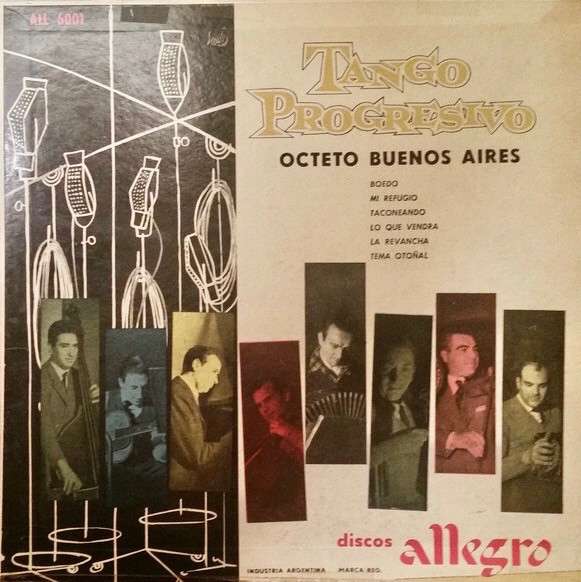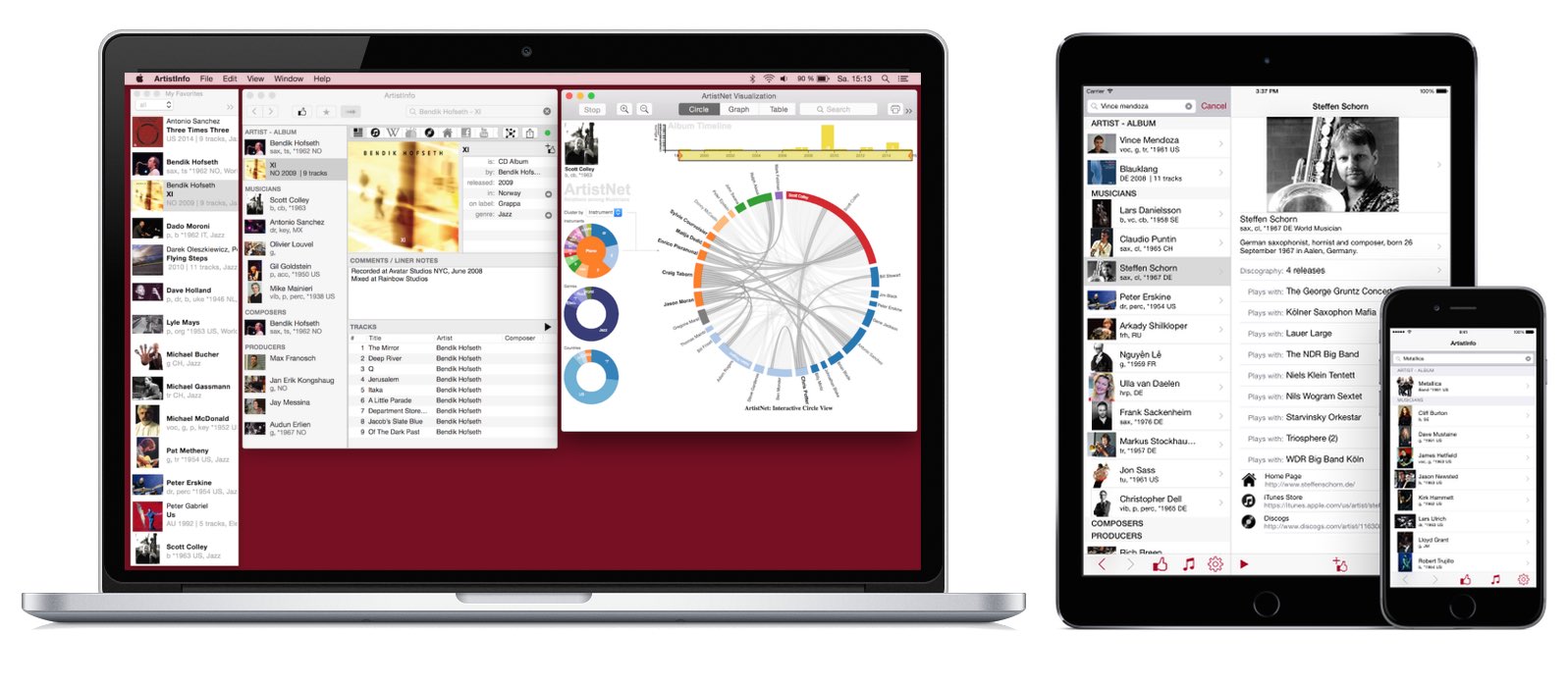
Octeto Buenos Aires
Tango Progresivo
Album AR 1956 on Allegro label
Latin, Folk, World and (Tango)
The 'New' Piazzolla and the Octet (1956-1959) This is the first of two records Piazzolla made with the "Octeto Buenos Aires", a 10" EP that unlike the second (that has been extensively reissued) has never been reissued in CD, yet it marks the beginning of Piazzolla's journey to transform Tango into "Modern Tango". Piazzolla returns to Argentina (1955) after his studies with Nadia Boulanger, he decides to form the OCTETO BUENOS AIRES. With this group Piazzolla produces innovations that influence forever his attitude as player and composer. A new violent passion to arrange and to compose (in two years he composed and arranged more that 40 works); his decision for producing a rupture with the traditional tango, and the conviction for developing a group of musicians that come up to the same temperature musically and on stage as what he saw in Paris with the Mulligan Octet, which impressed him so much. The Octeto Buenos Aires definitively links him to the instrumental tango but not exclusively. With a formation of two bandoneones, two violins, piano, cello, electrical guitar and bass, this group becomes a proclamation of the rejection to the place of privilege that the singer had, imposed in the tango of the 40’s, and also and expulsion of the dancer (unavoidable protagonist of that tango and personage always present in the actual tango-spectacle). With the Octet, Piazzolla goes deep into chamber music criteria that show the independence of the tango with the pattern of the Orquesta Típica. Furthermore, the electrical guitar incorporates a new timbre not existing in the genre. But, since that time it is decisive in the inexorable fusion between the performance and the composition. The intensity that Piazzolla wants for his performance enters the score and intends to reach a physical palpitation. The bandoneón, his style as a player, his conception of the phrases, the unexpected treatment of the tempo, the visceral explosion that breaks the calm, is more that the excellence of the player: it affects the treatment of the score. Piazzolla considers the Octet is the start of the Contemporaneous Tango. But, the revolution that Piazzolla makes (farther on the influences that produces and a lot of subsequent imitations), is a solitary revolution. The genre can’t absorb it and doesn’t evolve: rather Piazzolla breaks the genre. " Piazzolla (Astor) - bandoneon Federico (Leopoldo) - bandoneon Francini (Enrique Mario) - violin Baralis (Hugo) - violin Bragato (Jose) - cello Malvicino (Horacio) - guitar Stampone (Atilio) - piano Vasallo (Jose) - bass http://www.piazzolla.org/works2/tangoprogresivo.html
Musicians
 | Octeto Buenos Aires , album by |
Album Tracks
| No | Title | Artist | Composer | Duration |
|---|---|---|---|---|
| 1 | Boedo | Octeto Buenos Aires | ||
| 2 | Mi Refugio | Octeto Buenos Aires | ||
| 3 | Taconeando | Octeto Buenos Aires | ||
| 4 | Lo Que Vendra | Octeto Buenos Aires | ||
| 5 | La Revancha | Octeto Buenos Aires | ||
| 6 | Tema Otoñal | Octeto Buenos Aires |
